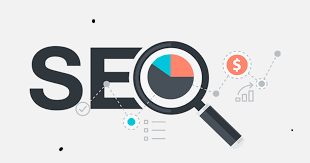The first and important method of on-page optimization is the optimization of individual content.
This involves the liberal use of the target keywords in spearhead areas these being the heading (H1, H2),
in the body content, image tag ‘Alt’, and URLs.
However, extreme caution should be taken for this is a variety of the black hat SEO which is known as keyword stuffing,
the act of overusing keyword in articles and texts.
However, it is always better to provide the keyword naturally and in the mean time,
give proper relevant and informative and entertaining content to the user.
Content length also has it’s place of importance.
In general, more extensive content with well-elaborated and
referenced information is preferable as to positioning since it meets the user needs more.
Also, integration of images, videos and perhaps information graphics can make the site more engaging and
thus increase key performance indicators including time and page visitation rate.
Title Tags and Meta Descriptions
Title tags, in fact, are among the most crucial on-page ranking factors.
The right title tag should contain the target keyword while giving a brief description of the information that is included in the given page.
Ideally it should be less than 60 characters, though it should be engaging to the extent
that it can entice people to click through from search engine result pages.
The meta descriptions are also important, although these are not directly connected with the ranking parameters
since they can be seen as a preview of the given pages by users.
Meta descriptions which are appealing can enhance the click through rates, while they also have an impact on your rankings.
Meta description is supposed to provide a brief of what the page is all about and it should contain keywords
but then it stands as the first line a viewer is makes to with a page hence it should be inviting.
URL Structure
An organized and simple URL structure is very important for every site’s rankings and to the users as well..
When submitting a site to the search engines, URLs should be kept as short as possible, descriptive and contain a relevant keyword.
For example, the URL like ‘’ www.example.com/seo-tips’’ is SEO-friendly than the URL like’ www.example.com/page1234’.
Apart from the above considerations the certain extra characters must be excluded and, in any case, the words in URLs must be separated with hyphens.
Image Optimization
Image optimization is a critical component of on-page SEO that few people ever think twice about.
Search engine bots cannot visually recognize images, and are therefore entirely dependent on file names, alt-texts, and captions to determine the depiction of part or whole of the image displayed.
Applying proper descriptions throughout the filenames and the alt text that has your focus keywords will help optimize such files for SEO while making them accessible.
Also, the proper selection of the parameters of graphics files helps save the time while loading web-pages – an important aspect for a user-interface and SE ranking.

